Adversity created popular 40 year-old one-design land yacht class
Published on April 16th, 2014
The infamous 1973-74 Oil Embargo caused a big problem for Oakland, California-based hang glider manufacturers Alan Dimen and Russ Thompson. In late 1973, the shortages and rising prices of gasoline and the resulting uncertainty caused many customers to suddenly stop buying their popular Manta hang gliders.
Faced with rapidly-declining sales and a big stock of the aircraft tubing and parts used in the gliders, they needed a new product – and quickly! Thus was born the Manta Windjammer land yacht, now commonly called the Manta Single.
First produced in early 1974, the Manta Single is arguably the oldest continuously-manufactured one-design land yacht in the world. Its aircraft-like quality, light weight, portability, ruggedness, ease of use and reasonable cost made it popular from the outset. In the early days, hundreds were produced, and many were shipped to international customers.
The design will celebrate its 40th anniversary this year and be featured as a one-design class at the FISLY-NALSA 14th Landsailing World Championship (the Worlds) to be held July 12-19, 2014 at Smith Creek Playa near the town of Austin in Northern Nevada.
NALSA, the North American Land Sailing Association, will host the event and is the U.S. Affiliate of FISLY, the International Federation of Sand and Land Yachts, the world governing body for competitive land sailing.
One design classes must adhere to strict ‘as-built-by-the-factory’ specifications and emphasize sailor (pilot) ability, not experimental design. They are popular because the designs are constant, offer a pure test of sailing ability and do not create an expensive innovation ‘arms race’.
While the Manta Single has enjoyed steady but moderate sales, its popular two-seater sibling, the Twinjammer (Manta Twin) introduced in 1976 and also a one-design, has outsold the Single by a 10-to-1 ratio for many years and regularly fields the largest fleets at U.S. landsailing regattas.
The Manta Twins are expected to vie with a new development (experimental) class, the International 5.6 Mini, for largest fleet at the regatta.
At the Worlds, Manta Singles and Twins will both play important roles as charter yachts for international competitors who are unable to bring their own land yachts but want to sail in the regatta. The competition is expected to be fierce in both classes, with skilled contestants from a number of countries sailing essentially identical land yachts.
Additional details: Russ Foster or event website

The aluminum jungle: Manta Single sailors tensely await the start of a race. Photo credit: Bob Dill.
Source: Event media
Landsailing Background Information
About landsailing: A landsailer or landyacht is a wheeled vehicle with a sail for propulsion and is powered solely by wind. Most landsailers use cloth sails to good effect, but wing sails similar to those on the latest America’s Cup catamarans have been used successfully on landsailors since the early 1980s. Most landsailers have a single mainsail and no headsail (jib).
History of Landsailing: For centuries, wheeled sailing vehicles were employed for commerce. In the 19th century, Europeans began constructing landsailors for pleasure and competition. In the U.S., landsailing got its start in the 1960s, and the North American Landsailing Association (NALSA) was incorporated in 1972 by Don Rypinski.
Modern Landsailing: In Europe, landsailing is primarily practiced on beaches. In the United States, most landsailing occurs on dry lake beds in the deserts of the western U.S. and on beaches. There are thousands of landsailors throughout the world, with national and international competitions.
Landsailing Organizations: The International Federation of Sand and Land Yachting (FISLY) is the organization that oversees the sport worldwide, and it comprises some 20 member organizations which represent the individual countries and classes that compete in landsailing races. Founded in Europe in 1962, FISLY is the rule-making body for the sport, and it oversees and sanctions numerous competitions each year.
About NALSA: FISLY’s American affiliate, the North American Landsailing Association (NALSA) provides similar functions for events held in the U.S. NALSA is an all-volunteer non-profit umbrella organization for landsailing clubs throughout the U.S. Its President is Dennis Bassano of Santa Cruz, CA. It was incorporated in 1972 and each year organizes the America’s Landsailing Cup regatta held in the last week of March on Ivanpah dry lake near Primm, NV at the California/Nevada state line off Interstate 15. NALSA has hosted two previous World Championships at Ivanpah in 1990 and 2002.
Landsailing Competition: Many landsailing competitions are held throughout the world each year. Every two years, the World Championship (‘the Worlds’) has been held in different host countries-Argentina in 2008, Belgium in 2010 and France in 2012. NALSA will host the 2014 championship July 12th through 19th at Smith Creek Playa near the town of Austin in Northern Nevada. The 2014 World Championship will be the final one before the regatta moves to an every-four-year cycle, so the Worlds probably will not return to the U.S. for at least 20 years. This likely will result in a strong turnout of both international and domestic competitors.
2012 World Championships Facts (France): Countries competing were Argentina, Australia, Belgium, Brazil, Chile, Czech Republic, Denmark, England, France, Germany, Ireland, Italy, Netherlands, Russia, Scotland, Spain, Switzerland, United States. Number of entrants: 350.


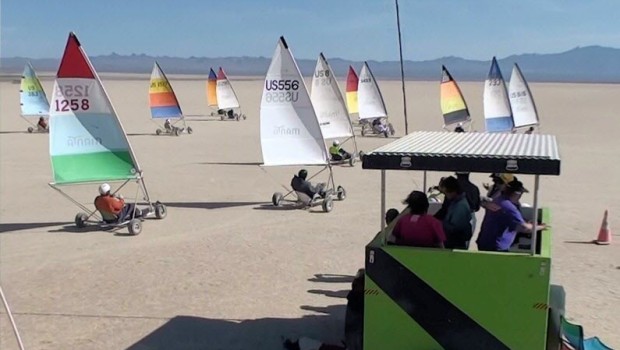



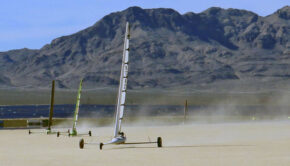
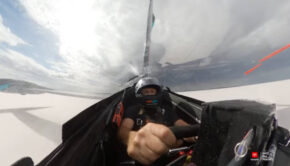
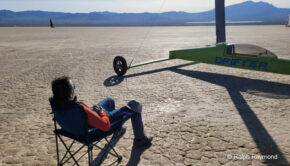
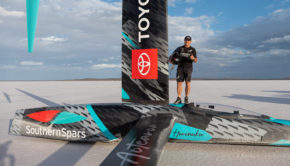
 We’ll keep your information safe.
We’ll keep your information safe.